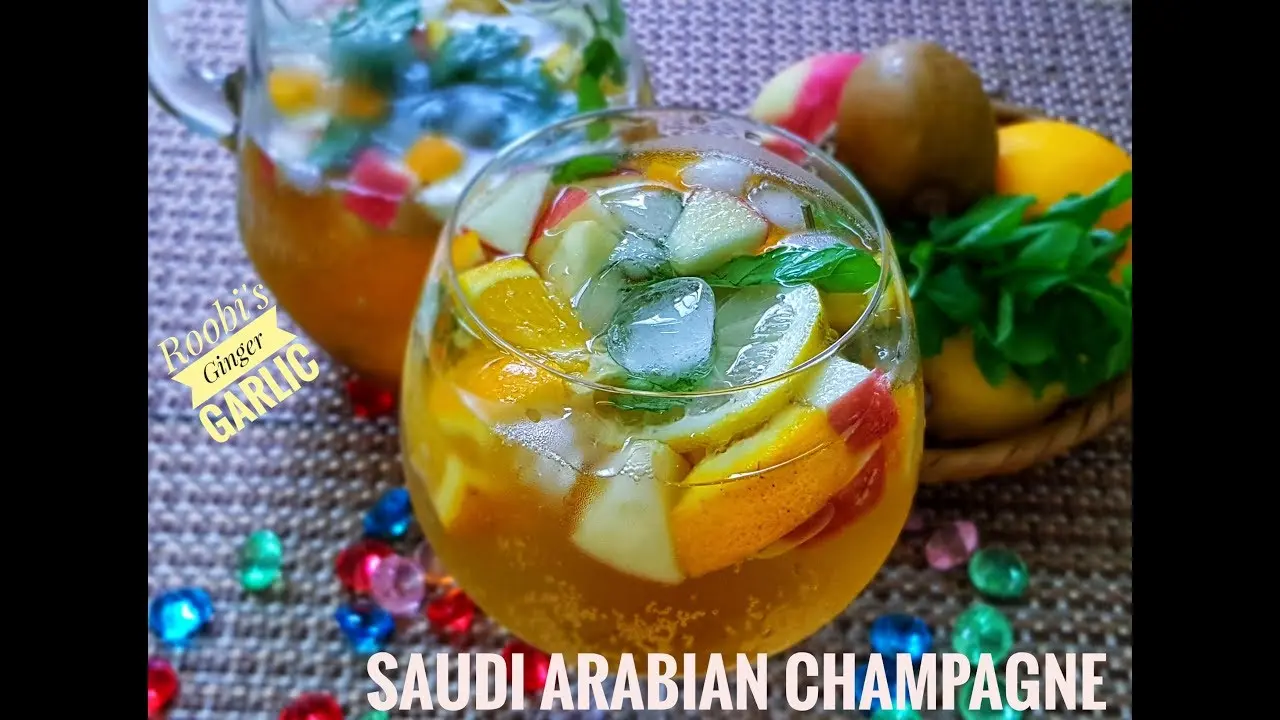
A Journey Through Saudi Arabian Cuisine Introduction
Saudi Arabia, a land steeped in history and tradition, boasts a culinary landscape as diverse and captivating as its vast deserts and bustling cities. From the fragrant spices of traditional dishes to the innovative creations of modern chefs, Saudi Arabian cuisine offers a tantalizing journey for the senses. This exploration delves into the heart of Saudi Arabian food and drink, uncovering hidden gems, exploring unique flavors, and providing a comprehensive guide to the Kingdom's gastronomic delights.
Understanding Saudi Arabian Food Culture A Historical Perspective
The roots of Saudi Arabian cuisine are deeply intertwined with the country's nomadic past and its strategic location along ancient trade routes. Bedouin traditions, with their emphasis on dates, milk, and meat, have shaped the culinary landscape for centuries. Influences from neighboring regions, including the Levant, Persia, and India, have further enriched the tapestry of flavors, creating a unique and vibrant culinary identity.
The Cornerstones of Saudi Arabian Cuisine Key Ingredients and Flavors
Several key ingredients form the foundation of Saudi Arabian cuisine. Dates, a staple food source for centuries, are used in a variety of dishes, from sweet desserts to savory stews. Rice, particularly basmati rice, is another essential ingredient, serving as the base for many traditional meals. Lamb and chicken are the most common meats, often seasoned with aromatic spices such as cardamom, cumin, coriander, and saffron. Yogurt and labneh (strained yogurt) are also frequently used, adding a creamy and tangy element to many dishes.
Traditional Saudi Arabian Dishes A Culinary Heritage
Saudi Arabia is home to a wealth of traditional dishes, each offering a unique glimpse into the country's culinary heritage. Here are a few must-try examples:
Kabsa The National Dish of Saudi Arabia
Kabsa is arguably the most iconic Saudi Arabian dish. This fragrant rice dish, typically made with lamb or chicken, is infused with a blend of spices, including cardamom, cloves, cinnamon, and saffron. The meat is often slow-cooked until tender and succulent, then served atop a bed of flavorful rice. Variations of kabsa exist across the country, each region adding its own unique twist to the recipe.
Mandi A Slow-Cooked Culinary Masterpiece
Mandi is another popular rice dish, originating from Yemen but widely enjoyed in Saudi Arabia. The key to mandi is the slow-cooking process, where the meat (usually lamb or chicken) is cooked in a tandoor oven, allowing the flavors to meld and the meat to become incredibly tender. The rice is then cooked in the meat's drippings, absorbing the rich flavors and aromas. Mandi is often served with a side of tomato salsa and yogurt.
Saleeg A Creamy Rice Delight
Saleeg is a creamy rice dish that hails from the Hejaz region of Saudi Arabia. The rice is cooked in milk or broth until it reaches a soft, porridge-like consistency. Chicken or lamb is often added to the dish, and it's typically seasoned with simple spices such as cardamom and black pepper. Saleeg is a comforting and flavorful dish, perfect for a cool evening.
Jareesh A Hearty Wheat Porridge
Jareesh is a hearty wheat porridge that's popular in the Najd region of Saudi Arabia. Cracked wheat is cooked with meat (usually lamb or chicken) and vegetables, creating a thick and flavorful stew. Jareesh is often seasoned with spices such as cumin and coriander, and it's a filling and nutritious meal.
Mutabbaq A Savory Stuffed Pancake
Mutabbaq is a savory stuffed pancake that's popular throughout the Middle East, including Saudi Arabia. Thin layers of dough are filled with a mixture of minced meat, eggs, vegetables, and spices, then pan-fried until golden brown and crispy. Mutabbaq is a delicious and satisfying snack or light meal.
Saudi Arabian Drinks Refreshing Beverages to Quench Your Thirst
Saudi Arabia offers a variety of refreshing beverages to complement its flavorful cuisine. From traditional coffee and tea to refreshing fruit juices and non-alcoholic cocktails, there's something for everyone to enjoy.
Saudi Coffee A Ritual of Hospitality
Saudi coffee, also known as Qahwa, is an integral part of Saudi Arabian culture and hospitality. It's typically made with lightly roasted Arabica beans and infused with cardamom and other spices. Saudi coffee is traditionally served in small, handleless cups called finjaan, and it's often accompanied by dates. The act of offering and sharing coffee is a sign of respect and welcome.
Saudi Tea A Social Staple
Tea is another popular beverage in Saudi Arabia, often enjoyed throughout the day. Black tea is the most common type, and it's typically served with sugar and mint. Tea is a social staple, often enjoyed with friends and family.
Fresh Fruit Juices A Natural Refreshment
Saudi Arabia boasts a wide variety of fresh fruit juices, made with locally grown fruits such as oranges, mangoes, and watermelons. These juices are a refreshing and healthy way to beat the heat.
Laban A Cooling Yogurt Drink
Laban is a cooling yogurt drink that's popular throughout the Middle East. It's made by diluting yogurt with water and adding a pinch of salt. Laban is a refreshing and hydrating beverage, perfect for hot weather.
Non-Alcoholic Cocktails A Modern Twist
In recent years, non-alcoholic cocktails have become increasingly popular in Saudi Arabia. These drinks are often made with a combination of fruit juices, syrups, and sparkling water, offering a sophisticated and refreshing alternative to alcoholic beverages. Many restaurants and cafes now offer a wide selection of non-alcoholic cocktails.
Saudi Arabian Desserts Sweet Treats to End Your Meal
Saudi Arabian desserts are known for their rich flavors and textures, often incorporating dates, nuts, and spices. Here are a few popular examples:
Maamoul Date-Filled Cookies
Maamoul are small, buttery cookies filled with dates or nuts. They're often made for special occasions such as Eid, and they're a delicious and festive treat.
Umm Ali A Creamy Bread Pudding
Umm Ali is a creamy bread pudding that's popular throughout the Middle East. It's made with layers of bread, milk, cream, nuts, and raisins, and it's often flavored with cardamom and cinnamon. Umm Ali is a rich and comforting dessert.
Kunafa A Crispy Cheese Pastry
Kunafa is a crispy cheese pastry that's soaked in sweet syrup. It's made with shredded phyllo dough and a layer of melted cheese, and it's often topped with pistachios. Kunafa is a decadent and satisfying dessert.
Basbousa A Sweet Semolina Cake
Basbousa is a sweet semolina cake that's popular throughout the Middle East. It's made with semolina flour, sugar, butter, and yogurt, and it's often flavored with coconut and almonds. Basbousa is a moist and flavorful cake that's perfect for any occasion.
Exploring Regional Variations in Saudi Arabian Cuisine A Taste of Diversity
Saudi Arabian cuisine varies significantly from region to region, reflecting the country's diverse geography and cultural influences. The Hejaz region, located along the Red Sea coast, is known for its seafood dishes and its use of spices. The Najd region, in the central part of the country, is known for its hearty wheat dishes and its use of dairy products. The Asir region, in the southwest, is known for its spicy dishes and its use of fresh herbs.
Dining Out in Saudi Arabia A Culinary Adventure
Saudi Arabia offers a wide range of dining options, from traditional restaurants serving authentic Saudi Arabian cuisine to international restaurants offering a variety of global flavors. Many restaurants offer private dining rooms, known as majlis, where guests can enjoy their meals in a more intimate setting.
Tips for Eating in Saudi Arabia Cultural Considerations
When dining in Saudi Arabia, it's important to be aware of local customs and etiquette. It's customary to wash your hands before and after eating, and to eat with your right hand. It's also considered polite to leave a small amount of food on your plate, indicating that you're full. During the month of Ramadan, Muslims fast from dawn to sunset, and restaurants are typically closed during the day. However, many restaurants offer iftar meals after sunset, which are a special and festive way to break the fast.
Specific Product Recommendations and Comparisons
Let's delve into specific product recommendations related to Saudi Arabian cuisine, along with comparisons and detailed information.
Dates: Ajwa vs. Medjool
Dates are a cornerstone of Saudi Arabian cuisine. Two popular varieties are Ajwa and Medjool. Ajwa dates, grown in Medina, are small, soft, and dark brown, known for their rich, caramel-like flavor and supposed health benefits. Medjool dates, on the other hand, are larger, plumper, and have a more chewy texture with a sweeter, almost honey-like taste.
Use Cases: Ajwa dates are often consumed on their own as a snack, offered as a sign of hospitality, or used in traditional medicine. Medjool dates are excellent for baking, stuffing, or adding to smoothies due to their size and sweetness.
Comparison:
* Ajwa: Smaller, softer, caramel flavor, considered more prestigious, often more expensive (around $20-30 per kg). * Medjool: Larger, chewier, honey-like flavor, more versatile for cooking and baking, generally more affordable (around $10-15 per kg).Saudi Coffee: Khawlani vs. Harari
Saudi coffee, or Qahwa, is traditionally made with Arabica beans. Two common bean types are Khawlani (Yemen) and Harari (Ethiopia), both widely consumed in Saudi Arabia.
Use Cases: Khawlani coffee is known for its complex, earthy, and slightly spicy flavor, often preferred for its traditional taste. Harari coffee offers a fruitier, more floral profile, appealing to those who prefer a lighter, brighter cup.
Comparison:
* Khawlani: Earthy, spicy, strong flavor, often roasted darker, traditional choice, price varies widely based on quality (around $15-40 per kg). * Harari: Fruity, floral, lighter flavor, often roasted lighter, becoming increasingly popular, generally more affordable (around $10-25 per kg).Spices: Saudi Baharat vs. Lebanese Seven Spice
Spices are essential in Saudi Arabian cooking. Saudi Baharat is a blend typically including black pepper, coriander, cumin, cardamom, cloves, cinnamon, and nutmeg. Lebanese Seven Spice is a similar blend often used in Levantine cuisine, sometimes including allspice or paprika.
Use Cases: Saudi Baharat is perfect for flavoring meat dishes like Kabsa and Mandi, adding warmth and complexity. Lebanese Seven Spice can be used in similar dishes but might impart a slightly sweeter or more peppery flavor depending on the specific blend.
Comparison:
* Saudi Baharat: Generally more focused on warm, earthy spices like cumin and coriander, often slightly less sweet, price varies depending on the brand and quality (around $5-10 per 100g). * Lebanese Seven Spice: May include allspice or paprika, potentially adding a hint of sweetness or smokiness, readily available in international markets, generally similar in price (around $4-9 per 100g).Rice: Basmati vs. Long Grain White Rice
Rice is a staple in Saudi Arabian cuisine, particularly Basmati rice. While long grain white rice is also available, Basmati offers a superior flavor and texture.
Use Cases: Basmati rice is ideal for dishes like Kabsa and Mandi, as its long grains stay separate and fluffy, allowing the flavors to be absorbed. Long grain white rice can be used as a substitute but may result in a less aromatic and slightly stickier dish.
Comparison:
* Basmati: Long, slender grains, aromatic, fluffy texture, more expensive (around $2-4 per kg). * Long Grain White Rice: Shorter, less aromatic, can become sticky, more affordable (around $1-2 per kg).Modern Interpretations of Saudi Arabian Cuisine A Fusion of Flavors
Modern Saudi Arabian cuisine is embracing innovation, with chefs experimenting with new techniques and ingredients while staying true to the country's culinary heritage. Fusion restaurants are popping up in major cities, offering creative dishes that blend traditional Saudi Arabian flavors with international influences. For example, you might find a Kabsa-inspired risotto or a date-infused tiramisu.
The Future of Saudi Arabian Food Embracing Innovation and Sustainability
The future of Saudi Arabian food looks bright, with a growing emphasis on sustainability and healthy eating. Local farmers are working to promote sustainable agricultural practices, and chefs are incorporating more locally sourced ingredients into their dishes. There's also a growing awareness of the importance of healthy eating, with restaurants offering more vegetarian and vegan options.
Saudi Arabian Cuisine A Culinary Adventure Awaits
Saudi Arabian cuisine is a captivating blend of tradition and innovation, offering a culinary adventure for those who are willing to explore its diverse flavors. From the fragrant spices of traditional dishes to the innovative creations of modern chefs, Saudi Arabian food is sure to tantalize your taste buds and leave you wanting more. So, embark on your own culinary journey and discover the hidden gems of Saudi Arabian cuisine.
:max_bytes(150000):strip_icc()/277019-baked-pork-chops-with-cream-of-mushroom-soup-DDMFS-beauty-4x3-BG-7505-5762b731cf30447d9cbbbbbf387beafa.jpg)






